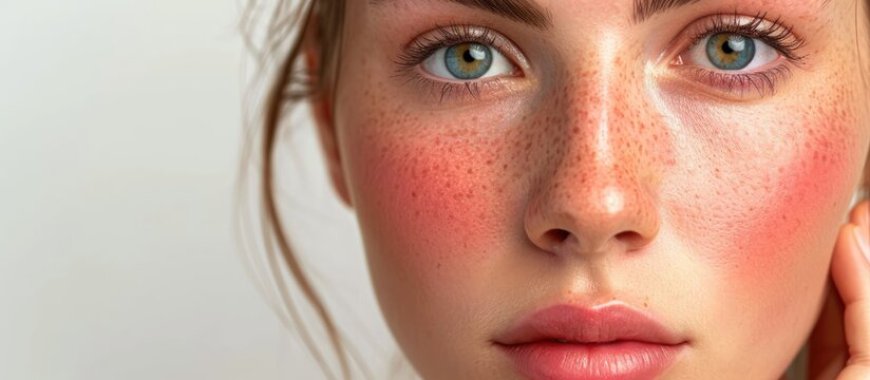Rosacea: A Symphony of Causes and Cures

Rosacea Treatment in Dubai is a chronic skin condition that primarily affects the face, leading to redness, visible blood vessels, and, in some cases, acne-like bumps. Though it can be a source of discomfort and self-consciousness for those who suffer from it, understanding the causes and exploring effective treatments can help individuals manage this condition more effectively. This article delves into the various triggers and available cures for rosacea, offering a comprehensive overview of this multifaceted skin issue.
Understanding Rosacea
Rosacea typically manifests as persistent redness in the central part of the face, often described as a "flushing" appearance. It can also lead to other symptoms such as burning or stinging sensations, dry skin, and thickened skin in some cases. While rosacea can occur at any age, it is most common in adults between the ages of 30 and 60, with women being affected more frequently than men. However, men often experience more severe symptoms.
Causes of Rosacea
Genetic Predisposition
Research indicates that genetics may play a significant role in the development of rosacea. Individuals with a family history of the condition are more likely to experience it themselves. Certain genes that influence the immune system and skin health may contribute to this predisposition.
Environmental Triggers
Several environmental factors can exacerbate rosacea symptoms. Common triggers include:
- Sun Exposure: Ultraviolet (UV) rays can damage the skin and trigger flare-ups. It's essential to protect the skin with sunscreen daily.
- Temperature Changes: Extreme temperatures, whether hot or cold, can provoke symptoms in many individuals. Sudden changes, such as moving from a cold environment to a heated room, can also trigger flushing.
- Wind: Harsh winds can irritate the skin, making it more susceptible to rosacea flare-ups.
Lifestyle Factors
Certain lifestyle choices can contribute to the onset and worsening of rosacea:
- Diet: Spicy foods, alcohol, and hot beverages are known triggers for many individuals with rosacea. Monitoring dietary habits can help identify specific culprits.
- Stress: Emotional stress and anxiety can lead to flushing and other rosacea symptoms. Developing stress management techniques can be beneficial for those affected.
- Skin Care Products: Some cosmetic and skincare products may contain irritants that exacerbate rosacea. It's important to choose gentle, fragrance-free products to minimize irritation.
Microbial Influence
Recent studies suggest that the skin's microbiome may play a role in rosacea. An imbalance of skin bacteria can lead to inflammation and trigger rosacea flare-ups. The presence of Demodex mites, which are naturally occurring on human skin, has also been linked to rosacea, though the exact relationship remains under investigation.
Cures and Management Strategies
While there is no definitive cure for rosacea, various treatments and management strategies can help alleviate symptoms and minimize flare-ups.
Topical Treatments
Dermatologists often recommend topical medications to manage rosacea symptoms. Common options include:
- Metronidazole: This antibiotic gel or cream helps reduce inflammation and redness.
- Azelaic Acid: Known for its anti-inflammatory properties, azelaic acid can help treat redness and bumps.
- Ivermectin: This topical medication is effective against Demodex mites and has anti-inflammatory properties.
Oral Medications
In more severe cases, healthcare providers may prescribe oral medications:
- Antibiotics: Tetracycline and its derivatives can reduce inflammation and redness associated with rosacea.
- Isotretinoin: In resistant cases, isotretinoin, a powerful acne medication, may be prescribed.
Laser and Light Therapies
For individuals with persistent redness or visible blood vessels, laser and light therapies can be effective. Options include:
- Pulsed Dye Laser: This treatment targets blood vessels, reducing redness and flushing.
- Intense Pulsed Light (IPL): IPL can help improve skin texture and reduce redness by targeting pigmented and vascular lesions.
Lifestyle Adjustments
Making changes to daily routines can significantly improve rosacea management. Key strategies include:
- Sun Protection: Daily use of broad-spectrum sunscreen with at least SPF 30 is crucial. Wearing hats and seeking shade can also help minimize sun exposure.
- Gentle Skin Care: Opt for mild, fragrance-free cleansers and moisturizers. Avoid products with alcohol, menthol, or other irritants.
- Dietary Modifications: Keep a food diary to identify potential triggers. Limiting spicy foods, alcohol, and hot beverages may help reduce flare-ups.
- Stress Management: Incorporate relaxation techniques such as yoga, meditation, or deep-breathing exercises to help manage stress levels.
Conclusion
Rosacea is a complex condition influenced by various genetic, environmental, and lifestyle factors. While it can be a source of frustration, understanding the triggers and available treatment options can empower individuals to manage their symptoms effectively. By adopting a holistic approach that includes medical treatments, lifestyle adjustments, and skin care strategies, those affected by rosacea can find relief and regain their confidence.
With ongoing research, there is hope for better treatments and a deeper understanding of this condition in the future, allowing individuals to live their lives more freely and comfortably. If you suspect you have rosacea or experience any related symptoms, consult a dermatologist for personalized advice and treatment options.
